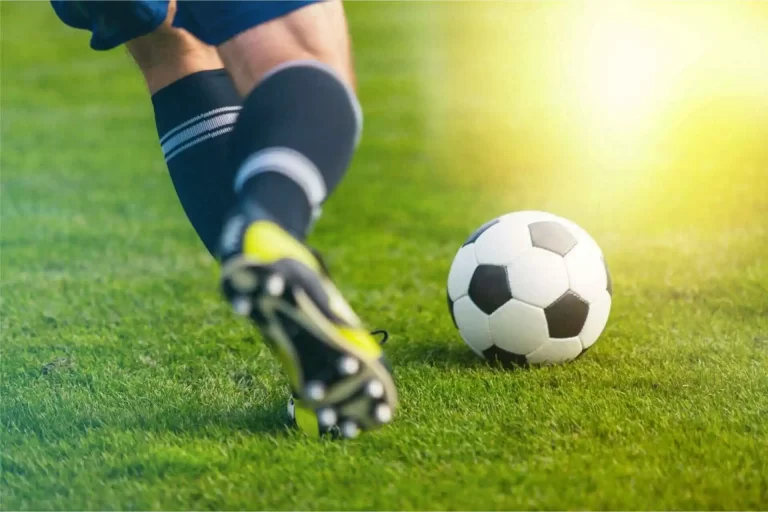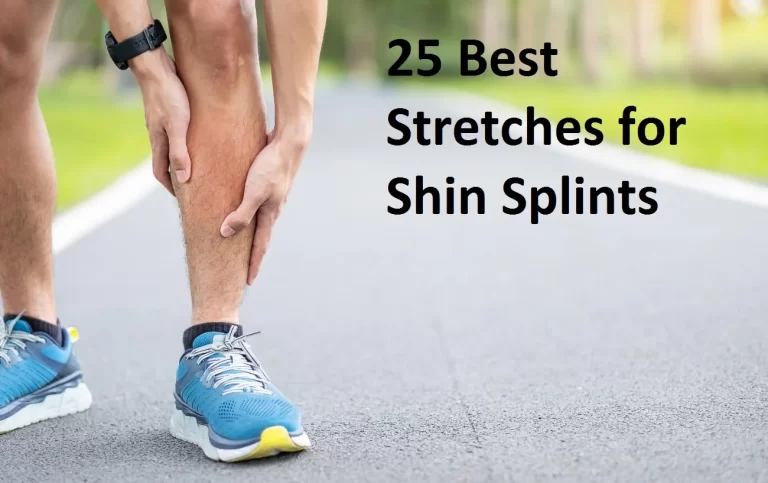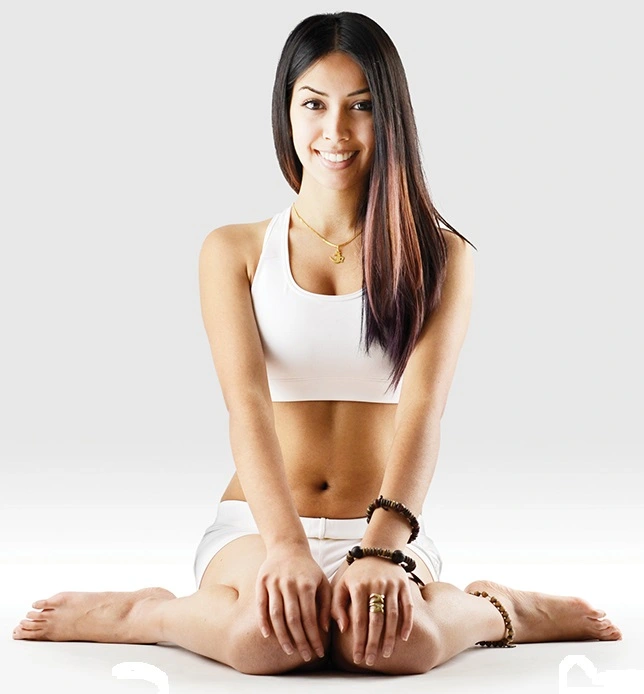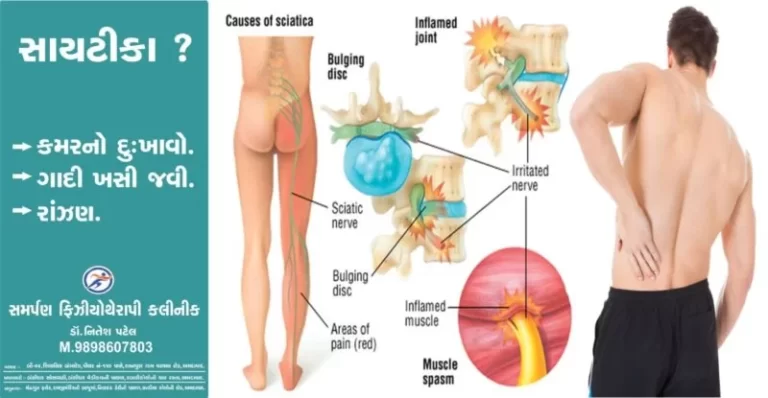Hip adductor muscles strengthening exercises: Health Benefits, How to Do?
What is the hip adductor muscles strengthening exercises?
Hip adductor exercises utilize multiple small muscles in your inner thigh that are responsible for bringing your thighs together, providing balance and supporting and proper hip alignment. Most people might only consider doing hip adductor exercises whenever they walk past the hip adductor machine in the gym but we are here to change that Mentality.
It is important to strengthen the hip adductor muscles to increase mobility and flexibility, enhance stability and prevent leg injuries. Having strong abductors is an integral part of sports performance, maintaining mobility, and injury prevention, as you age. This is an important muscle group that contributes to hip mobility and strength. In terms of strength training, the adductors are mostly overlooked because they can be difficult to properly train.
What are the adductors muscles?
The adductors muscles located in your inner thighs work to bring your legs towards the center of your body.
This movement of bringing your legs inside is called adduction. This muscle is also known as the groin muscle.
When you squeeze your legs together, you will feel the muscles of your inner thigh activating — these are the adductors.
The hip adductors are a group of 5 muscles in the inner thighs. The main action of the hip adductor muscles is to adduct the hips or bring the thighs together to the center of the body.
The hip adductors include the following muscles:
Adductor Brevis: The shortest muscle of the hip adductors, the adductor brevis is a triangular muscle positioned behind the adductor longus and anterior to the adductor Magnus. The main action of the adductor brevis muscle is to adduct the hip. This muscle also plays a role in hip flexion and possibly even external rotation of the hip.
Adductor Longus: This triangular-shaped muscle is the most anterior located muscle of the hip adductors. The main action of the adductor longus is hip adduction. This muscle also helps to do hip flexion and extension.
Adductor Magnus: This muscle has fan-shaped. This is the largest hip adductor muscle. The adductor Magnus supports the hip flexion and the extension of the thigh.
Gracilis: One of the weaker hip adductor muscles and it located most superficial, the gracilis overlies the other adductor muscles. The gracilis action is the flexor and internal rotator of the leg from the knee joint.
Pectineus: This is the short muscle. This muscle action is both flexes and adducts the thigh at the hip joint.
What is the Difference between Hip Adductors and Hip Abductors?
Many people might get confused about the difference between the hip abductors and hip adductors although they play opposite actions in our body. As mentioned above, the hip adductors are responsible for bringing your thighs together at the center of the body while the hip abductor muscles are responsible for opening the thighs away from the body.
Health Benefits Of Hip Adductor Exercises.
The hip adductors are often overlooked when it comes to strengthening exercises but this is a mistake. By not strengthening these muscles you are leaving yourself suffering from groin injuries.
Below we explain some benefits of doing hip adductor exercises.
- Better Balance: this exercise helps you to better balance as they keep our bodies upright when doing a sudden lateral motion. Some hip adductor exercises are also encouraged unilateral movement which engages the small muscles, helps to improve balance.
- Enhanced Rotational Power: Strong hip adductors give our bodies produce more rotational power. The internal rotation of the hips required in some games like baseball or tennis requires rotational power and torque which is partly supported by these adductor muscles.
- Boost Hip Extension: Hip extension plays the main role in some of the big compound lifts such as squatting and deadlifts. doing hip adductor exercises in your normal workout routine can improve your lifts, boost athletic performance and make daily living activities easier.
- Reduce Risk of Injury: Groin pulls are a common injury sustained in sportsmen and even in daily life. The cause of groin strain occurs due to tight or weak hip adductors. By strengthening and stretching the adductor muscles you can decrease the chances of experiencing this injury.
- Athletes, in particular, depend on this muscle group to aid in explosive movements such as jumping, running, and quickly moving from side to side.
Here we explain the Best Hip Adductor Strengthening Exercises.
Standing Leg Circles
How to do it?
- This is the dynamic warm-up exercise, this exercise improves blood circulation to the hip muscle and upper leg.
- for this exercise, you have to stand with feet hip-width apart.
- Raise the left leg off the floor. while balancing on the right leg, create a small circle with your left leg.
- Complete 10 to 20 repetitions on the left side then move to the right leg.
Note: If you have a balance issue then stand close to a prop where you can help to stabilize your body by holding something.
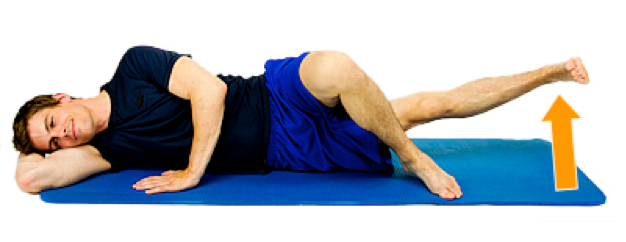
Side-Lying Hip Adduction
How to do it?
- This is an excellent exercise for the hip adductors that can be done on the floor while isolating a single leg at a time.
- All you need to do is to focus on contracting your hip adductor muscles to raise your leg off the floor.
- For this exercise, you have to lie down on your left side, take your arms in front of you with your elbows and forearm on the floor for support. raise your right leg over your lower leg placing your heels against the thigh of your bottom leg.
- Keep your leg extended, raise it upward as much as possible.
- Slowly return to the initial position.
- Do 10 to 25 repetitions on each side.
Note: You can add some challenge to your exercise by using a resistance band attached to an anchor or by strapping an ankle weight to your leg.
Squat Side Kick
How to do it?
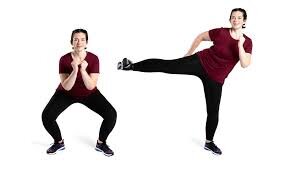
- The squat side kick body weight exercise will utilize both the adductors and the abductors and is a great all-around lower limb exercise.
- This exercise combines two movements that enable both muscle strengthening and stretching which is important to decrease your risk of suffering from groin pain.
- For this exercise you have to stand with a shoulder hip-width apart, your hands are together in front of you.
- Flexed your knees until your thighs are parallel to the floor, then stand up and transfer your weight to your right leg while kicking out the left leg to the side.
- Back to squatting position then repeat it on another leg.
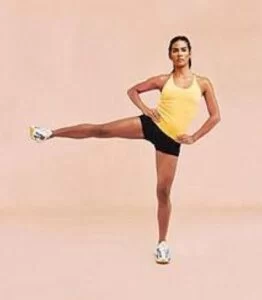
Note: Your core muscles should be engaged throughout the movement with your back straight, chest up, and do not let your knees extend past your toes while squatting.
Standing side Leg Raise
How to do it?
- This is an excellent body weight exercise that can hit the hip adductors of one leg while hitting the hip abductors of the other leg as you will be using an isometric hold on your other leg to keep it in the air.
- For this exercise, you have to stand with shoulder hip width apart.now on your left leg away from the body.
- Then Lift your right leg as far as comfortable, and hold it there for 4 to 6 seconds.
- Raise your left leg to your right leg until they touch then lower back to the initial position.Complete 10 to 18 repetitions of 2 to 3 sets.
Note: To make this exercise more challenging strap ankle weights to both legs.
Sumo Squat
How to do it?
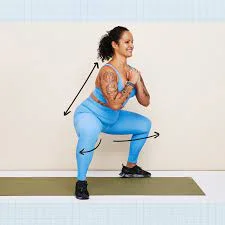
- This variation of the squatting will hit the large muscle groups in the lower limb plus the inner thighs.
- Keep your back straight and your chest up throughout the exercise.
- Even though the sumo squat has a smaller range of motion compared with a regular squat, it is still an effective exercise that can be incorporated into your normal workout.
- For this exercise, you have to stand wider than shoulder-width stance with your pointing outside.
- Take a squatting position, drop your hip down and back while your back is straight and chest up until your thighs are parallel to the floor.
- Push-off through the floor return to the initial position.
Note: If you want to add some challenge to your exercise then hold a kettlebell in your hand.
Cross Scissors
How to do it?
- This is an excellent exercise to work your hip adductor muscles and the core muscle simultaneously.
- Cross scissors are challenging as you need to stay in a crunched position throughout the movement.
- Maintain this position by crossing your legs in front of you require all your stabilizing muscles to be contracted.
- For this exercise, you have to Sit down and brace yourself by putting your hands on the ground back to you. move your leg off the floor in front of you at a 30 degree to 40-degree angle with one leg crossed over the other.
- Your core muscle should be engaged throughout the movement in a semi-“V” position move your legs out to the sides then bring them back closed while crossing the other leg over.
- Do this with an Alternate leg until you complete 10 to 20 repetitions on each side.
Note: You can increase the difficulty of cross scissors by sitting in a “V” position without bracing your upper limb with your arms.
Dumbbell Side Lunge
How to do it?
- The side lunge is an excellent exercise to improve your balance, stability, and lower limb strength.
- The side-to-side movement is both a strengthening and stretching exercise. this exercise utilizes your hip abductors and hip adductor muscles.
- For this exercise, you have to stand with shoulder hip-width apart and hold the dumbbells at your chest level.
- Take a large step to your side and drop your hip down and back until your thighs are parallel to the floor while your foot is planted on the ground.
- Push through your flexed foot, bring your back to the initial position.
- Repeat it for 10 or 15 repetitions then move to the next leg.
Note: To make this exercise easy you can do body weight side lunges. your back should be in a neutral position and chest up while trying not to lean forward.
Cossack Squat
How to do it?
- This exercise moves your body through the frontal plane of motion, going side to side.
- Working your lower limb at this angle can improve the flexibility of your hips, knees, and ankles.
- You will enhance your stability by mastering this exercise by getting a good stretch and strengthening the hip adductors.
- For this exercise, you have to stand with feet in a wide stance with toes pointing outside by dropping your hips downward and back.
- Squat down to that single side shift your weight while your other leg is extended out with your heels on the floor, toes pointing up.
- Push through the ground with your flexed leg bring your back to starting position.
- Repeat this exercise on the other leg by shifting the weight and lowering it down into a squat position on the other side.
Note: This exercise requires a high degree of mobility so if you can not go all the way down then go as far as you can while trying to improve each workout. your back should be maintained in a neutral position throughout the exercise.
Copenhagen Side Plank
How to do it?
- This exercise is the most difficult variation of plank that not only hits the core muscles but also strengthens the hip adductors. This exercise will help to balance out the strength in the muscles on the outside of the hip.
- For this exercise you have to lie down to the floor and perpendicular to the bench then brace yourself on your forearm and elbows.
- Lift with your flexed knee lift your top leg and place it on the bench.
- Hold this position as much as possible by you.
- Complete 20 to 25 repetitions for 2 sets then do this on another side.
Note: Increase the difficulty by doing this exercise with your legs extended with only your ankle placed on the bench.
Cable Hip Adductor
How to do it?
- You may notice women at the gym doing this exercise while the men are avoiding it.
- It is time to change the stigma that cable hip adductions are not mainly, everyone should be doing this exercise to strengthen the adductors to reduce the risk of injury.
- Make sure you are warmed up with some dynamic stretches before performing this exercise then try to start with less weight and maximum repetitions until you are comfortable enough to increase the weight.
- Find an attachment that you can use to strap onto your ankle closest to the pulley.
- Set up the pulley around calve level. Stand to the side of the pulley. Brace yourself using your hand against the machine in a safe place where your fingers won’t get pinched. Your active leg should be up off the floor towards the pulley.
- Pull your leg away from the pulley towards the middle of your body.
- Slowly let your leg return to its initial position Completed desired number of repetitions
Note: This exercise can also be done with this same technique by attaching a resistance band to a fixed anchor point.
Seated Hip Adduction
- The seated hip adduction will isolate the hip adductor muscles when you are seated, only having to focus on bringing your thighs together.
- Add this exercise towards the end of your leg day after completing the bigger compound lifts such as squatting.
- Seat in the machine with your back against the backrest
- Set the width of the knee pads to a manageable position that gives a good stretch to your inner thighs but does not overstretch the adductor muscles
- Set up a lightweight for the first time set so that you do not overdo it.
- Squeeze your thighs together while exhaling, until your knees meet in the center of the body.
- Slowly return to the initial position.
- Complete maximum repetitions.
Adductor machine
How to do it?
- Most people think of isolating the adductors, they may think of the classic adductor machine found in gyms across the world.
- Though this machine can do an excellent job of training the adductor, it is not the only movement that can yield good results.
- Considering that you can adjust the amount of weight and width of the pads, this exercise is great for beginners. It is best to start super light to get a feel for the exercise and avoid getting injured.
- For this exercise, you have to sit on the machine begin with sitting on the machine with the pads positioned between your legs as wide as is comfortable, and select your ability-wise resistance.
- In a controlled manner, contract your thighs together just until the pads touch, feeling the muscles contract.
- Slowly reverse the movement, returning your thighs to the initial position. Repeat for the desired number of sets and repetitions.
- If just starting, try 2–3 sets of 10 reps.
Wide stance squat
How to do it?
- Squatting is a king of leg exercises and this will stimulate the whole leg.
- There have different squat variations but here we discuss the wide stance squat also known as sumo squat which will utilize your inner thigh muscles.
- You can do this exercise with a variety of weighted equipment like a barbell, kettlebell, dumbbell, or sandbag — or with just only your body weight.
- For this exercise, you have to stand a little wider than the shoulder hip-width apart, turn your toes outside.
- Shift your weight backward and slowly lower your hips until thighs are parallel to the ground.
- Then return to the initial position by pushing through the ground, your inner thigh muscles are contracted.
- Do 10 to 15 repetitions of 2 to 3 sets.
Standing banded adduction
How to do it?
- For this exercise you need a resistance band, wrap a resistance band on a solid anchor. you have to stand on either side of your body facing the anchor point and the resistance band.
- Allow the resistance band to pull your leg to the side by resisting the movement.
- To begin this exercise you have to stand tall and bring your banded leg towards the mid line of the body, you feel the good contraction in your inner thighs.
- Slowly release your leg back to the side with control movement.
- Switch the legs and do 10 to 20 repetitions for 3 to 4 sets on each leg.
Seated banded adduction
How to do it?
- For this exercise you need a resistance band, wrap a resistance band on a solid anchor.
- You have to sit on the bench on either side of your body facing the anchor point and the resistance band.
- Put your internal foot through the resistance band, the band is positioned just below the knee joint. allow the resistance band to pull your leg towards the anchor point.
- Move your leg towards the center of the body by contracting your adductor muscle.
- Repeat this on both legs.
- Do 2 to 3 sets of 12 to 15 repetitions.
Lateral lunge
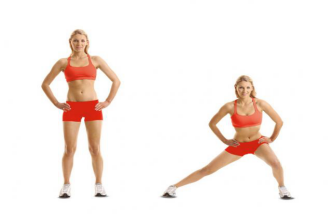
How to do it?
- For this exercise, you have to stand with feet hip-width apart. step out of your left leg and start with sending your hip back as you flex your left knee.
- You can reach your arms forward for counterbalance if you like. during the descent, your knee shouldn’t move more than two inches beyond your toes, and your knee should be aligned between 2 and 3 toes.
- The toe turns outwards slightly. push-off through your left to return to an initial position.
- Repeat on your right side leg to complete the first repetitions.
- Do 3 to 4 sets of 8 to 10 repetitions on both legs.
When did you not do this exercise?
- If your health care provider is advised you to take a rest.
- If you are already suffering from back and knee pain.
- If your lower limb bone is recently fractured.
- If you feel pain during this exercise.


